
A John Scher, Metropolitan Talent Presents, Jubilee Time Prods. presentation of a show in two acts. Executive producer, Gary Labriola. Directed, choreographed by Ron Lewis. Music supervisor, Billy Stritch. Additional material, David Zippel. With: Liza Minnelli, Johnny Rodgers, Cortes Alexander, Jim Caruso, Tiger Martina. There’s a standard set of questions to be asked about any Liza Minnelli show: 1. How did she l ook? 2. How did she sound? 3. Did she open wearing black, white or red? 4. How many superlatives did she spout? 5. Did she mention David Gest? 6. Was she fabulous? A trainwreck? A fabulous trainwreck? For the peace of mind of all the hardcore acolytes desperate to know about “Liza’s at the Palace,” let’s get those answers out of the way immediately: 1. Terrific. 2: Pretty darn good. 3. White (vintage Halston). 4. Lost count. 5. Only obliquely, and not by name. 6. Kinda fabulous.
In her return to Broadway after nearly 10 years’ absence, Minnelli had the opening-night audience in the palm of her hand from her first moment onstage -- striking that signature, one-arm-pointed-skyward pose, appropriately framed by a giant pink triangle of light. Even without the occasional shouts of “I=2 0love you, Liza,” the affection flowing from the crowd hung in the air like perfume.
Yet what makes Minnelli a great entertainer when she’s firing on all cylinders is how hard she works for the audience’s love. And how much she clearly thrives on it. In an age in which so many female concert performers are overproduced automatons, deigning to be worshipped by their fans, Minnelli’s emotional give-and-take makes her a disarming relic. Part of the unique thrill of watching her strut through “New York, New York” in New York is the knowledge she represents an era of entertainment that’s all but gone.
Sure, the voice is frayed and husky, the control wavers, many of the lyrics are slurred and the big belt at times hides behind the orchestra’s ample brass section to disguise the effort. But nobody who would buy a ticket to this show in the first place is going to care a whit. Minnelli’s charisma is undiminished and her vocals still have power, warmth and a startling ability to make every song personal.
In “I Would Never Leave You” (written for her by regular piano-man Billy Stritch with Johnny Rodgers and Brian Lane Green), she asks the audience, “Where would I go? Don’t you know how much I need you?” That kind of sentiment might be sticky coming from another performer, but those huge, imploring eyes dignify it with genuine vulnerability. Even before she hoists herself up on an elevated director’s chair to sing a bluesy “Maybe This Time,” her legs dangling like a little girl’s, the audience has already wrapped her in its protective embrace.
Clowning through “If You Hadn’t, But You Did” from the Jule Styne, Betty Comden, Adolph Green show “Two on the Aisle,” she steps clumsily over the imaginary corpse of a freshly shot husband, wryly referencing her own marital missteps. In Charles Aznavour’s gay existential anthem, “What Makes a Man a Man?,” as Minnelli sings “I stand defenseless,” it’s impossible not to think of her rocky history of tabloid humiliation. And in “Cabaret,” when she deadpans “That’s what comes from too much pills and liquor,” a silent pause and a shrug are all that’s needed to acknowledge those vanquished demons.
In her last stint at the Palace, “Minnelli on Minnelli” in 1999, the performer had to put the chorus boys in charge at frequent intervals to mask her lack of physical stamina. This time, she’s onstage solo through the entire first act and all but one number in the second, and while she’s often out of breath, she ne ver for a moment appears to be giving less than 100%. She doesn’t really dance anymore, but even firmly planted at the microphone through Kander & Ebb’s “And the World Goes Round,” Minnelli has a showbiz illusionist’s way of making a shoulder pop, a nod of the head, a toss of the hand or a shuffle of the feet seem like a full routine.
Only in act two, when Minnelli pays extended tribute to her godmother, the vocal coach, arranger and nightclub performer Kay Thompson, does she get some backup from an appealing quartet of male vocalist-dancers, standing in for the Williams Brothers.
Time-traveling to Ciro’s in 1948, Minnelli and the boys present a zesty facsimile of Thompson’s legendary act, with its sophisticated arrangements, jazzy harmonies and snappy choreography. “Jubilee Time,” “Basin Street Blues,” “Clap Yo’ Hands” and “I Love a Violin” are dynamite. And when Minnelli exits while the guys sing the Gershwins’ and Gus Kahn’s “Liza (All the Clouds’ll Roll Away),” the interlude is far more buoyant than any mere filler number. Particularly in this section, which relies on elements beyond Minnelli herself, the polish of director-choreographer Ron Lewis’ work is evident.
Minnelli’s reminiscences about Thompson naturally overlap with reflections on her mother, acknowledged in a touching but rushed act-one medley of songs from Judy Garland’s own post-Hollywood comeback stint at the Palace in 1951.
Perhaps it’s the steady deepening of Minnelli’s rapport with the audience over the course of the evening, but Garland’s spirit seemed almost to be up there onstage with her daughter in a particularly poignant “Mammy” near the close of the show. And Minnelli’s tender choice of encore -- “Have Yourself a Merry Little Christmas,” segueing wistfully into “I’ll Be Seeing You” and a ccompanied only by Stritch at the piano -- seemed the perfect summation of a mother and daughter’s combined legacy, an emotional connection to their audience that in life or death never dims.
It also suggested that when Minnelli does finally decide to stop communing with large congregations, her intimate cabaret act will be a knockout.
In her return to Broadway after nearly 10 years’ absence, Minnelli had the opening-night audience in the palm of her hand from her first moment onstage -- striking that signature, one-arm-pointed-skyward pose, appropriately framed by a giant pink triangle of light. Even without the occasional shouts of “I=2 0love you, Liza,” the affection flowing from the crowd hung in the air like perfume.
Yet what makes Minnelli a great entertainer when she’s firing on all cylinders is how hard she works for the audience’s love. And how much she clearly thrives on it. In an age in which so many female concert performers are overproduced automatons, deigning to be worshipped by their fans, Minnelli’s emotional give-and-take makes her a disarming relic. Part of the unique thrill of watching her strut through “New York, New York” in New York is the knowledge she represents an era of entertainment that’s all but gone.
Sure, the voice is frayed and husky, the control wavers, many of the lyrics are slurred and the big belt at times hides behind the orchestra’s ample brass section to disguise the effort. But nobody who would buy a ticket to this show in the first place is going to care a whit. Minnelli’s charisma is undiminished and her vocals still have power, warmth and a startling ability to make every song personal.
In “I Would Never Leave You” (written for her by regular piano-man Billy Stritch with Johnny Rodgers and Brian Lane Green), she asks the audience, “Where would I go? Don’t you know how much I need you?” That kind of sentiment might be sticky coming from another performer, but those huge, imploring eyes dignify it with genuine vulnerability. Even before she hoists herself up on an elevated director’s chair to sing a bluesy “Maybe This Time,” her legs dangling like a little girl’s, the audience has already wrapped her in its protective embrace.
Clowning through “If You Hadn’t, But You Did” from the Jule Styne, Betty Comden, Adolph Green show “Two on the Aisle,” she steps clumsily over the imaginary corpse of a freshly shot husband, wryly referencing her own marital missteps. In Charles Aznavour’s gay existential anthem, “What Makes a Man a Man?,” as Minnelli sings “I stand defenseless,” it’s impossible not to think of her rocky history of tabloid humiliation. And in “Cabaret,” when she deadpans “That’s what comes from too much pills and liquor,” a silent pause and a shrug are all that’s needed to acknowledge those vanquished demons.
In her last stint at the Palace, “Minnelli on Minnelli” in 1999, the performer had to put the chorus boys in charge at frequent intervals to mask her lack of physical stamina. This time, she’s onstage solo through the entire first act and all but one number in the second, and while she’s often out of breath, she ne ver for a moment appears to be giving less than 100%. She doesn’t really dance anymore, but even firmly planted at the microphone through Kander & Ebb’s “And the World Goes Round,” Minnelli has a showbiz illusionist’s way of making a shoulder pop, a nod of the head, a toss of the hand or a shuffle of the feet seem like a full routine.
Only in act two, when Minnelli pays extended tribute to her godmother, the vocal coach, arranger and nightclub performer Kay Thompson, does she get some backup from an appealing quartet of male vocalist-dancers, standing in for the Williams Brothers.
Time-traveling to Ciro’s in 1948, Minnelli and the boys present a zesty facsimile of Thompson’s legendary act, with its sophisticated arrangements, jazzy harmonies and snappy choreography. “Jubilee Time,” “Basin Street Blues,” “Clap Yo’ Hands” and “I Love a Violin” are dynamite. And when Minnelli exits while the guys sing the Gershwins’ and Gus Kahn’s “Liza (All the Clouds’ll Roll Away),” the interlude is far more buoyant than any mere filler number. Particularly in this section, which relies on elements beyond Minnelli herself, the polish of director-choreographer Ron Lewis’ work is evident.
Minnelli’s reminiscences about Thompson naturally overlap with reflections on her mother, acknowledged in a touching but rushed act-one medley of songs from Judy Garland’s own post-Hollywood comeback stint at the Palace in 1951.
Perhaps it’s the steady deepening of Minnelli’s rapport with the audience over the course of the evening, but Garland’s spirit seemed almost to be up there onstage with her daughter in a particularly poignant “Mammy” near the close of the show. And Minnelli’s tender choice of encore -- “Have Yourself a Merry Little Christmas,” segueing wistfully into “I’ll Be Seeing You” and a ccompanied only by Stritch at the piano -- seemed the perfect summation of a mother and daughter’s combined legacy, an emotional connection to their audience that in life or death never dims.
It also suggested that when Minnelli does finally decide to stop communing with large congregations, her intimate cabaret act will be a knockout.















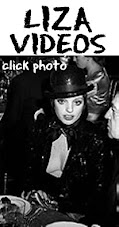


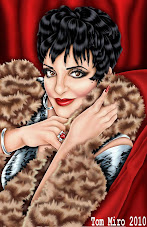

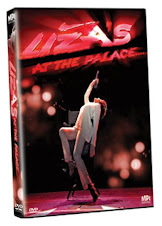











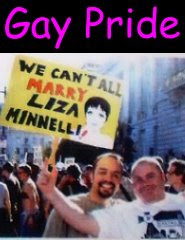














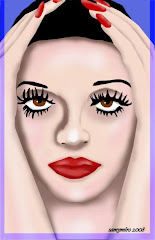
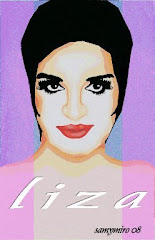


























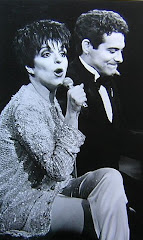


































No comments:
Post a Comment